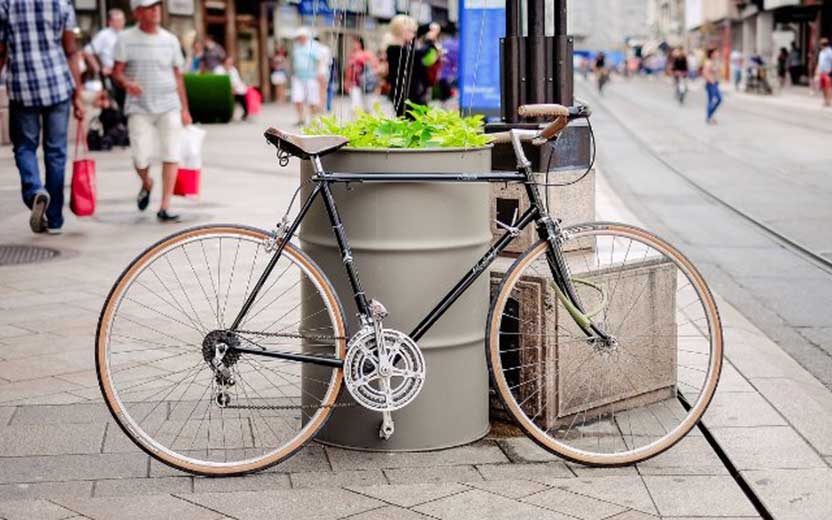By Marcus Fernandez
A car does not need to be your go-to means of transportation for the daily commute to work. Two national events remind us each year of alternative ways to accomplish daily commutes or errands around town.
National Ride To Work Day is on the second Tuesday of June and encourages people to leave their cars at home. Replace them with motorcycles or scooters! Don’t have one, then dust off your bicycle in May. This happens to be National Bike Month, the pedal variety of bikes rather than the Harley-Davidson type. May includes National Ride A Bike Day on the first Sunday and Bike To Work Day on the third Friday.
Explore the health and environmental benefits of riding to work or around town on two wheels instead of four. The experienced motorcycle accident lawyers at KFB Law will get your safety awareness up to speed and explain your rights. Not sure what to do if you’re in an accident? Stay tuned.
National Ride To Work Day
It started more than three decades ago as a grassroots effort to increase public awareness of the popularity of motorcycle ownership. Today, the all-volunteer nonprofit organization Ride to Work promotes the second Tuesday of June each year as National Ride To Work Day.
It’s a way to remind motorists about the two-wheeled vehicles that share the road with them. At the same time, it provides an opportunity for motorists and cyclists to increase their awareness of methods for avoiding collisions.
Motorcycles offer several advantages over other types of motor vehicles for commuting to work or running around town, including the following:
- Motorcycles cost less to buy and maintain: The price of a new or used motorcycle can be substantially less than you’d pay for a car or SUV. You’ll also find the costs of maintaining a bike to be less than other types of motor vehicles.
- Better gas mileage: Motorcycles cost less to operate because of their superior fuel efficiency over cars and SUVs.
- Insurance rates: Motorcycle insurance costs less than what you’d pay for a car, depending on where you live and your driving record.
- Parking and handling: Motorcycles are more agile and easier to maneuver on the road. Their smaller size makes parking a breeze.
- Environmentally friendlier than cars: Motorcycles consume less fuel, and their lighter weight does less damage to streets than heavier vehicles.
National Ride To Work Day may be all you need to decide that the motorcycle you ride on weekends to get out and enjoy Florida’s great weather and sights can double as your everyday means of transportation.
Tips for drivers for safely sharing the road with motorcycles
Their smaller size relative to cars and other motor vehicles can make it difficult for drivers to see motorcyclists. The faster acceleration and quicker maneuverability of motorcycles make it harder for drivers to anticipate lane changes or quick turns by motorcyclists, so the following are tips for motorists to protect motorcyclists and avoid accidents or near misses:
- There may be room to move your car into a lane already occupied by a motorcyclist, but it’s dangerous and illegal in Florida.
- Keep a lookout for motorcycles making turns at intersections or entering the road from sidestreets, driveways, or parking lots.
- Motorcycles can stop very quickly, so a car following one too closely risks colliding with a bike that suddenly stops.
- Do not rely on a motorcycle’s brake lights to alert you that it’s stopping or slowing down. It’s common for motorcyclists to ease off the throttle or downshift to slow down. This is another crucial reason to be alert and not tailgate when driving behind a biker.
- Using your mirrors when changing lanes is not enough to avoid crashing into a motorcycle you did not see because it was in a blind spot. Turn your head slightly and look before changing lanes.
Motorists should be aware of motorcyclists’ difficulties controlling their bikes on rough roads or during wet or windy weather conditions. Make sure to leave extra space when traveling behind a motorcycle.
Safety tips for motorcycle operators
If you ride a motorcycle or a moped, safety awareness is a two-way street. You need to do your part, which starts by complying with the protective gear requirements of Florida law.
All riders must wear eye protection. Also, a helmet that meets federal safety standards must be securely fastened to a rider’s head. A person older than 21 may ride a motorcycle without a helmet. To do so, they must prove they have a medical benefits insurance policy for at least $10,000.
Moped operators and their passengers must be age 16 or older to ride without a helmet. The medical benefits insurance requirement applies only to motorcycles under current Florida law. Other safety tips to keep you safe when riding a moped or motorcycle include the following:
- Help drivers see you by wearing bright, high-visibility clothing, particularly when riding at night, in inclement weather, or in foggy conditions.
- Take a motorcycle safety course that includes riding instruction and practice before testing your schools on the road.
- Do a pre-ride check to ensure your brakes, lights, tires, controls, and other equipment function properly.
- Continuously scan ahead and around you to spot potentially hazardous situations or conditions, such as turning vehicles or debris and obstacles on the road.
- When riding with others, do not ride more than two abreast in a lane.
- Avoid the use of alcohol and drugs. Even prescription medications can affect your ability to control a two-wheeled vehicle, so check with your doctor about potential side effects.
- Keep your headlight on at all times to make yourself visible to other vehicles.
If it’s been a while since you last rode on a motorcycle or moped, take a few minutes in a safe area, such as an empty parking lot, to reacquaint yourself with the controls and keep the vehicle stable while riding around at low speeds.
Staying safe when your choice of two-wheeled vehicle is a bicycle
Riding a bicycle is an excellent way to improve and maintain your health. A few of the health benefits of cycling include:
- Reduces risk of chronic diseases: Studies prove that riding a bike contributes to reducing the risk of developing hypertension and type 2 diabetes.
- Improves strength and flexibility: Improve the flexibility and strength of core, hips, and leg muscles while also improving balance and posture.
- Improves heart health: Riding a bike regularly is an excellent low-impact aerobic exercise to strengthen your heart and circulatory system.
- Shedding pounds becomes easier when you incorporate cycling into your weight loss plan.
One way to get into a regular schedule of riding a bike is by using it in place of your car. Instead of getting into your vehicle to drive to work, school, or the local market, take your bicycle. Not only will you reap health benefits, but a bike does not require fuel or release toxic fumes. This can help less pollution to the environment.
Here are tips for cyclists to follow to stay safe and avoid accidents:
- Inspect your bicycle before riding: Make sure that all equipment, including brakes, gears, and chains, are in good working order and tires are inflated.
- Make yourself visible to motorists: Wear light-colored clothing and equip your bike with reflectors and lights to make you visible to motorists. A white headlight is required for any bikes on the road between sunset and sunrise.
- Wear a helmet: Helmets prevent or lessen the severity of head injuries and should be worn by all riders. Florida law requires the use of a helmet by riders who are younger than 16.
- Know the rules of the road: The law in Florida treats bicycles as vehicles, so you must obey the rules of the road and traffic laws.
- Signal your intentions: Use hand signals to warn drivers that you intend to stop, slow down, or turn.
- Use bicycle lanes: You must use bicycle lanes or ride as close to the right curb as possible.
- Stay alert: Watch for cars making turns or other potentially hazardous situations. Bicycle riders must watch for and yield to pedestrians crossing the street.
Motorists encountering bicycle riders should follow the same safety rules they would follow for motorcycles. Staying alert and applying common sense and courtesy to encounters with bicycle riders can avoid accidents.
What to do when in an accident?
If you are injured in an accident, call 911 and wait for the police to arrive. While waiting for first responders, try not to move around as that could worsen the injuries.
Depending on the extent of your injuries, you may be taken by ambulance to hospital for treatment. If not, arrange to be examined by a physician immediately after police allow you to leave the accident scene.
Tampa personal injury attorneys are looking out for you
It doesn’t matter what your go-to mode of transportation is. You have the right to be compensated when injured in an accident caused by someone else’s negligence. The personal injury attorneys at KFB Law can help with advice and representation you can trust and rely upon. Contact KFB Law to learn more during a free consultation with an experienced personal injury attorney.


